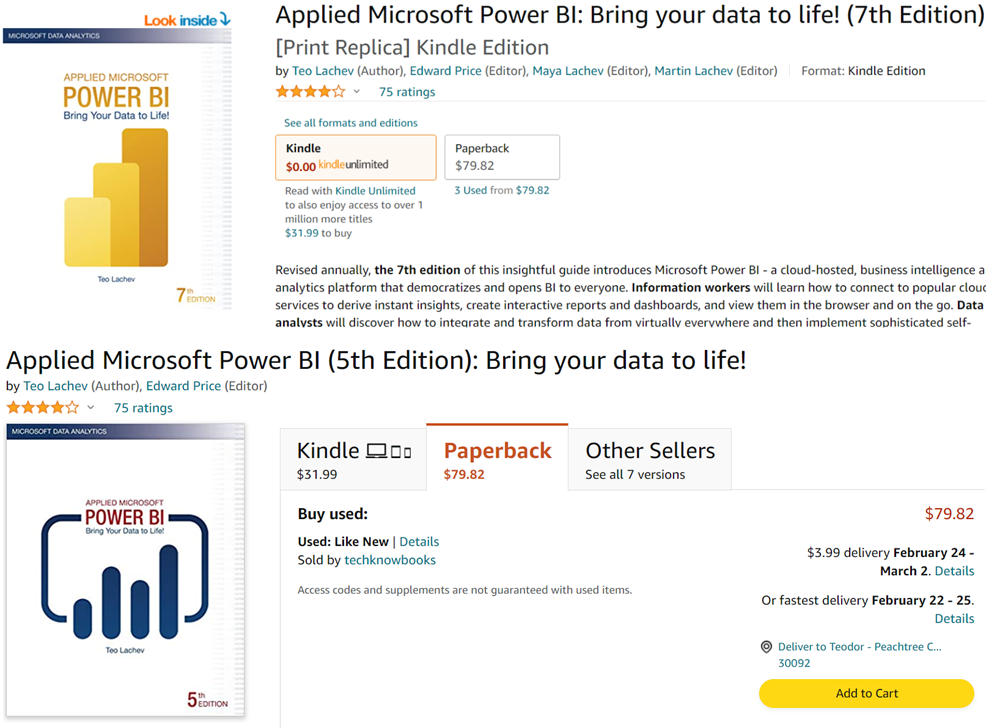How Power BI Broke Amazon
Amazon started in 1994 as an online marketplace for books. You’d think that after being in this business for almost 30 years, they’ve figured out the book ecommerce inside out. Unfortunately, rapid revisions (I revise annually my Power BI book) break their model. Every new revision wreaks havoc in the customer experience to purchase a book and punishes the publisher. Here is what I’ve learned after having my books sold on Amazon for many years.
- Amazon has a proprietary algorithm that decides what to show on the book detail page. My books are available in two formats: paperback and ebook (Kindle). When a customer lands on the book page, the natural expectation is that the Kindle tab would redirect to the ebook format and the Paperback tab would redirect to the paperback format of the same edition. Unfortunately, the publisher has no control over what the Paperback tab would eventually link to. For example, in the screenshot below, today the algorithm has decided that the customer would be more interested to purchase the 5th edition paperback (7th edition is currently the latest) for the modest price of $79.82 because it’s a vintage. Not to mention that the 5th edition has been long unpublished and only available from third-party sellers that should’ve been listed on the “Other Sellers” tab.
- Every time a new revision is published, the book fights with itself. Despite the 7-year overall history and 75 reviews of my Power BI book, a new revision goes all the way back in the line, and its sales ranking starts from zero. Amazon doesn’t give any credit to prior revisions or reviews. And by the time the book has enough history to bubble up in the search results, it’s time for a new revision, and the cycle repeats itself.
I wrote this post mostly as an apology to my customers since there is nothing that be done to improve their Amazon book purchasing experience. The book is at the mercy of Amazon and its obsolete algorithms.





